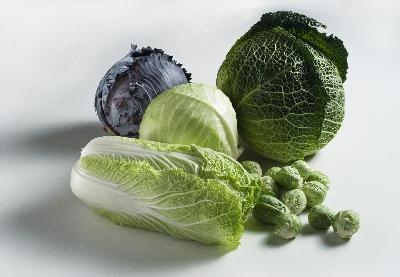The Best Vitamin K Sources
and the signs of deficiency
Some foods are good vitamin K sources but the main supply of this vitamin is within the body itself. It is made in our intestines and gut from the friendly bacteria found there.
It is for this reason that it’s important to maintain good levels of friendly bacteria and a healthy gut with a regular intake of substances such as bio-yogurt drinks.
The best vitamin K sources include:
- Broccoli
- Cauliflower
- Spinach
- Brussels sprouts
- Cabbage
- Soya beans
- Yogurt
- Potatoes
- Tomatoes
- Egg yolks
Vitamin K is needed in the body to help the function of blood clotting. It is also essential for bone formation and repair as it helps form the protein that reacts with calcium to build bone. Therefore it may help prevent osteoporosis.
It also promotes a healthy liver by helping store glycogen there after converting it from glucose.
It is also said that vitamin K may increase resistance to infections in children.
Antibiotics increase the need for dietary or supplemental vitamin K, because it is manufactured by bacteria in the gut, taking antibiotics, which kill the bacteria, interferes with this process. Antibiotics also interfere with the absorption of vitamin K.
Possible vitamin K deficiency signs are:
- Poor blood clotting
- Nose bleeds
Deficiency is rare but can occur if there is gall bladder disease present which prevents the absorption of fats. Also excessive intake of vitamin E may cause a decrease in vitamin K absorption.
Do not take vitamin K in large doses if:
- In the last few weeks of pregnancy as it can result in a toxic reaction in the newborn.
- If taking blood-thinning medication as it can interfere with their action. Consult health care provider first.
Large doses of this vitamin can cause flushing and sweating.
- Click back to the homepage

New! Comments
Have your say about what you just read! Leave a comment in the box below.